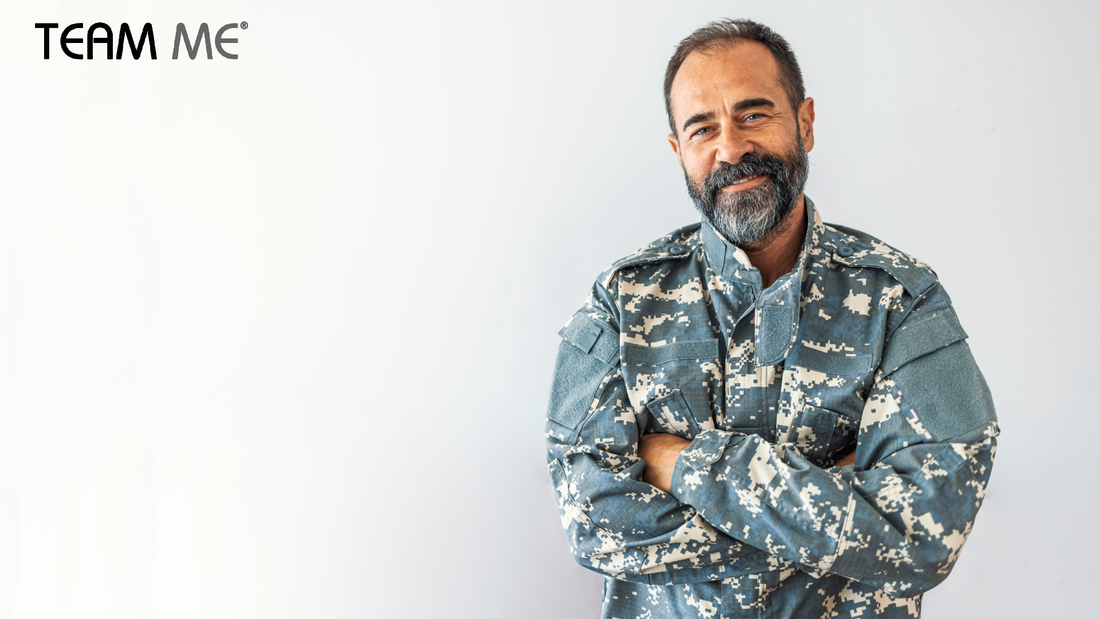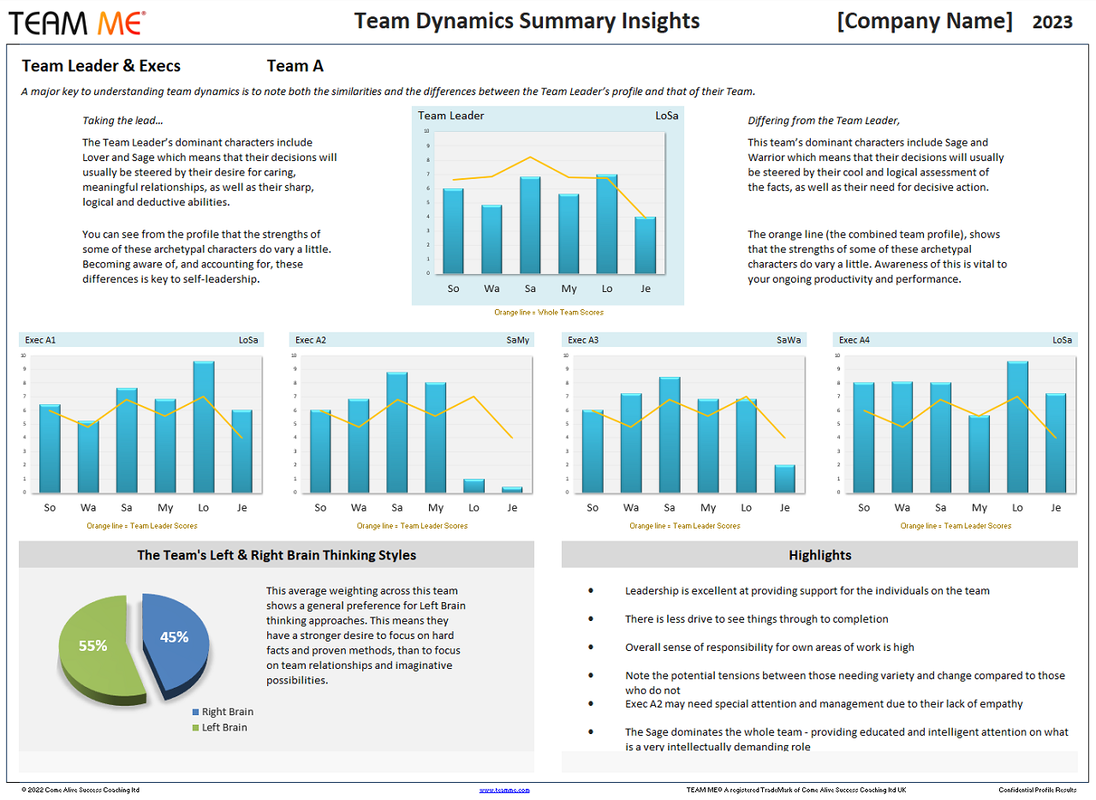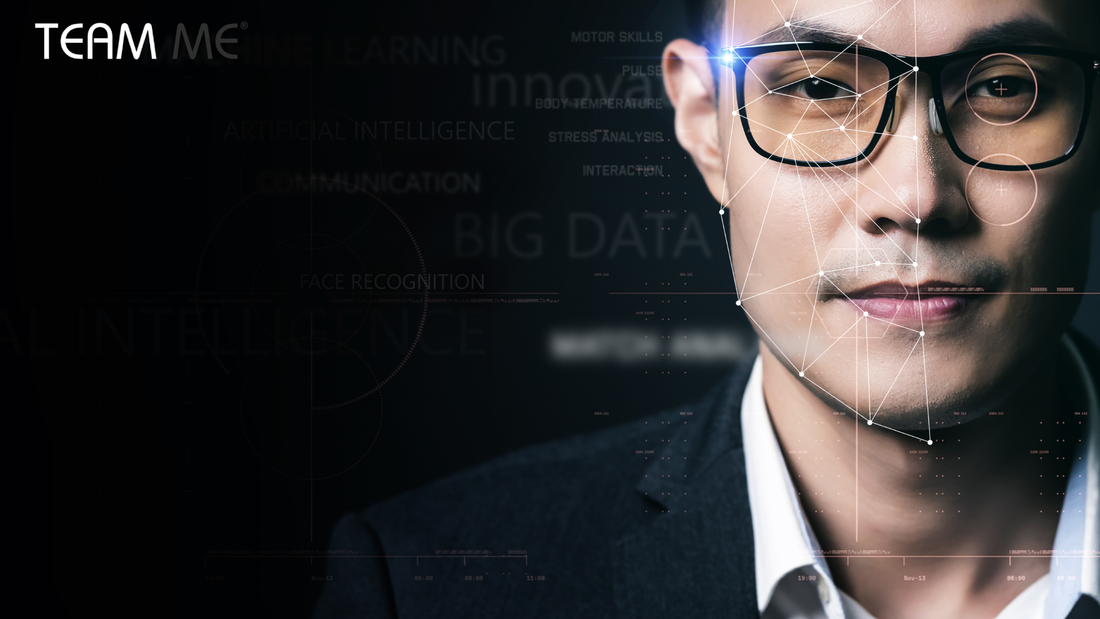.The transition from military service to civilian life is a profound and challenging phase for veterans. Having spent years in a structured and disciplined environment, service members develop a unique sense of identity that is deeply shaped by their experiences in the armed forces. As they step into civilian life, these veterans face a critical need to establish a new sense of personal identity, reconciling their past with their future. Understanding the factors that have moulded their identity during their military tenure, and addressing the significant adjustments required for civilian life, are essential for their successful reintegration into society. This article builds upon the two previous articles entitled: The Veterans Quest #1 - The Hidden Battle of Veterans in Transition and The Veterans Quest #2 - Transition and the Perceived Loss of Purpose, that laid a foundational understanding of the plight of veterans as they traverse the, often bumpy, period of transition into civilian life. “I know it sounds absurd, but please tell me Who I Am.” - Supertramp. Military IDAn individual’s sense of identity is enormously shaped by what is demanded of them in their life situation. From before we were born our environment has nurtured us in countless ways to mould us into who we have become today. During the course of our lives, a significant and permanent shift in our environment can cause us to experience a deep sense of uncertainty that has us questioning who we really are. Losing a sense of identity in this way can be extremely mentally and emotionally destabilising, and can lead to a host of psychological challenges. The solution would be to find a pathway, for it is in all truth and ongoing journey, to rediscover a core sense of identity that defines us for who we really are, whatever environment we find ourselves in. Identity exists on multiple levels and for this kind of discovery we need to go deep enough to discover what is fundamental to our personal and unique design. While there’s no room here for a full-scale thesis, it’s worth us breaking down this brief overview into 3 critical areas:
Let’s explore each in turn. Factors Shaping Identity in the Military1. Camaraderie and Brotherhood: Serving in the military fosters strong bonds with fellow service members. Soldiers often develop a profound sense of camaraderie and brotherhood, relying on one another in challenging and life-threatening situations. This close-knit connection becomes a defining aspect of their identity and social support. 2. Purpose and Mission: Military personnel are driven by a sense of purpose and mission larger than themselves. The dedication to protecting their nation and fellow citizens instils a deep sense of pride and identity linked to their role in the armed forces. 3. Discipline and Structure: The military's rigid structure and discipline permeate every aspect of a service member's life. This sense of order and routine becomes ingrained in their identity, shaping their behaviours and decision-making process. 4. Specialised Skills and Training: Service veterans often acquire unique skills and expertise during their time in the military that are really only of use in a military setting. These abilities contribute to their identity as people around them value them for these skills (e.g. bomb-disposal). Of course, it may pose a challenge to such a skilled individual when no one in civilian life knows or cares about these abilities. 5. Adversity and Resilience: Military life exposes individuals to significant adversity and challenges. Overcoming these hardships builds resilience and fortitude, traits that help to define their identity and may influence how they approach civilian life's obstacles. But who are you when your enemy is vanquished? We all need to find our still centre - that sense of who we are when there’s nothing to resist, nothing to demand our core skills. The Challenges and Demands of Adjusting to Civilian Life1. Loss of Camaraderie: Leaving the close-knit military community can lead to a profound sense of loss and isolation. Veterans may struggle to find similar support networks and friendships, leading to feelings of detachment. 2. Redefining Purpose: Transitioning veterans often encounter a void in their lives when their military mission concludes. They must redefine their sense of purpose and find new avenues to contribute to society. 3. Reintegrating into Civilian Society: The military's structured environment contrasts with the more fluid nature of civilian life. Veterans may find it challenging to adapt to the lack of hierarchy and clear-cut chain of command. They’re free to make so many decisions for themselves now, self-guided choices that they had little opportunity to practise in the past. 4. Dealing with Trauma: Many service members carry emotional and psychological scars from their experiences, such as combat trauma or the loss of comrades. Coping with these traumas is critical for establishing a new and healthy civilian identity. 5. Bridging the Skills Gap: While veterans possess valuable skills, translating them into civilian job qualifications can be challenging. They might need to undergo additional training or education to match the requirements of their desired careers. 6. Facing Misunderstanding and Stereotypes: Civilian society may hold misconceptions about military life and veterans, leading to potential stigma and prejudice. Overcoming these stereotypes is vital for building a positive civilian identity. Establishing a New Sense of Identity1. Seek Support: Connecting with other veterans, joining support groups, or seeking counselling can help navigate the challenges of transitioning into civilian life and foster a new sense of camaraderie. 2. Embrace Individuality: Veterans should recognize that their identity extends beyond their military service. Exploring personal interests, hobbies, and passions will aid in forming a unique civilian identity. 3. Set New Goals: Establishing new short-term and long-term goals will provide a sense of purpose and direction, giving veterans a renewed sense of motivation. 4. Emphasise Transferable Skills: Identifying and highlighting transferable skills acquired during military service will boost confidence and make them more marketable in the civilian job market. 5. Educate and Advocate: Engaging with civilian communities to share experiences and educate them about military life can help dispel stereotypes and foster understanding. The Forward MarchThe journey of transitioning from military service to civilian life is a transformative and often very challenging experience for veterans. Establishing a new sense of personal identity is a complex process that requires introspection, support, and a willingness to embrace change, but it is absolutely vital if a solid foundation is to be established from which the veteran can build their new life outside the institutional structures they’ve formerly been used to.
Challenging though it is, by acknowledging the factors that shaped their identity in the military and addressing the adjustments needed to succeed in civilian life, veterans can effectively integrate into society and find fulfilment beyond their years of service to their nation. As a society, it is our responsibility to recognise the importance of this transition and support our service veterans as they embark on this path of rediscovery and renewal. At TEAM ME® we're exploring new ways to elevate the self-respect, self-worth, self-awareness and self-empowerment of veterans in the UK and around the world. If you are actively involved in supporting veterans at scale, feel free to get in touch to see how our rapid Personality Profiling solution could help you in your own quest to elevate the lives of those who have served - and still have so much more to give. Many military veterans in transition find themselves facing a very real sense of purposelessness in their civilian work and new life situation. Leaving the forces and entering civilian life presents any individual with a significant culture shock, one that they should prepare themselves for, and navigate with full conscious awareness of the dynamics and pressures that will inevitably impact them. What we can say however is that the causes of the psychological challenges that those in transition regularly face are easy to identify and are actually rather obvious when brought to the surface. Remedying these matters may not be a simple task, we should hastily add, but in recognising them for what they are we can define a clear direction of focus for any individual seeking better ways to navigate these uncertainties. Four vital areas that we need to understand include the following: 1. Ambiguity and Lack of Structure: Transitioning veterans may initially find civilian life to be ambiguous and lacking the structured environment they are accustomed to. This absence of a clear-cut mission can lead to a perceived loss of purpose. 2. Reconciling Service and Civilian Roles: Finding ways to transfer their sense of service and commitment from military roles to civilian professions can be challenging, especially when facing professions that may not appear as directly impactful. 3. Navigating Identity Shifts: As veterans separate from the military, their identity can undergo significant changes. They may struggle to reconcile their former roles and experiences with the person they are becoming in the civilian world. 4. Missing Camaraderie: The strong bonds formed during military service can be challenging to replicate in civilian life. The absence of a close-knit unit can lead to feelings of isolation and disconnection from a shared sense of purpose. Face-offAddressing these matters is a mission in itself. It takes time to understand the enemy, to respect their strengths, and combat their potentially destructive influence in the veterans’ life. Let’s focus on four significant counter-measures that can help any veteran reclaim their sense of purpose and develop strategies for a successful transition. 1. Reflection and Goal-Setting: Veterans should take time to reflect on their values, passions, and long-term aspirations. Setting new goals aligned with these aspects can reignite a sense of purpose in civilian life. 2. Embrace Transferable Skills: Identifying the skills acquired during military service and understanding how they can be applied in civilian settings can offer a renewed sense of purpose and confidence. 3. Engage in Community Service: Participating in community service or volunteering can provide veterans with an opportunity to continue serving and making a positive impact in their new communities. 4. Seek Mentorship and Support: Engaging with fellow veterans who have successfully transitioned can provide valuable insights and support during this journey. 5. Pursue Education and Personal Growth: Lifelong learning and personal development can lead to new interests and passions, expanding the scope of potential purpose in civilian life. Into ActionThe transition from military service to civilian life presents a unique opportunity for veterans to rediscover their sense of purpose. As purpose is deeply woven into the fabric of military life, the journey of transitioning may seem daunting, with veterans facing challenges in adapting to a new environment that may initially appear void of such purpose.
By understanding the intrinsic connection between purpose and military life, however, and empathising with the struggles of personnel in transition, we can collectively support our veterans in their quest to reclaim and redefine their sense of purpose. Through reflection, engagement, and personal growth, transitioning veterans can embark on a fulfilling and purpose-driven journey in civilian life, continuing to make a positive impact in their communities and beyond. At TEAM ME® we're exploring new ways to elevate the self-respect, self-worth, self-awareness and self-empowerment of veterans in the UK and around the world. If you are actively involved in supporting veterans at scale, feel free to get in touch to see how our rapid Personality Profiling solution could help you in your own quest to elevate the lives of those who have served - and still have so much more to give. Combatting the Invisible FoeHidden in plain sight, many veterans in transition face a daily battle with challenges for which they find themselves ill-equipped. Every society with a significant number of military veterans in its midst must acknowledge its duty to those who have served their country. We need to go beyond a mere annual remembrance to an active acknowledgement of the specific challenges faced by veterans on a daily basis - especially during their transition from military service to civilian life. The struggles that these veterans face must not be underestimated as they have far-reaching consequences, impacting not only the individuals themselves but also their families, communities, and society as a whole. By shedding light on the ramifications of the transitional journey, we can better understand the urgency of supporting our veterans and creating a more compassionate and inclusive society. Three of the very common challenges we should acknowledge include: unemployment and welfare issues, the prevalence of chronic mental health issues, and the alarming rates of suicide. These issues we'll highlight here by drawing upon reliable statistical sources from both the United States and the United Kingdom, statistics that reflect what is really a global issue. Unemployment and Welfare ChallengesOne of the most pressing issues veterans face during transition is the difficulty in securing employment. According to the US Bureau of Labor Statistics, as of September 2021, the unemployment rate for US veterans (who had served on active duty in the Armed Forces since September 2001) was 4.4%, a rate that exceeded the US national average unemployment rate at the time. Similarly in the UK, a 2021 Ministry of Defence survey found 11% of veterans were unemployed, compared to just 4% of non-veterans. Veterans' unemployment can be attributed to several factors, including the struggle to translate military skills and experiences into civilian job qualifications. Veterans also often have to deal with physical and mental health conditions resulting from their military service which further limit their ability to engage in certain professions. As a result of this, unemployed veterans often have to rely on welfare programs for daily financial support. While some qualify for unemployment benefits, others require assistance from social welfare programs to meet even their basic needs. This reliance on welfare impacts veterans, their families, and society at large, placing added strain on finances and mental wellbeing. Chronic Mental Health IssuesChronic mental health issues are prevalent among veterans in transition. In the US, a 2021 study found 30% of surveyed post-9/11 veterans reported having been diagnosed with a mental health condition like depression, PTSD or anxiety. Comparable UK data shows 19% of veterans surveyed by the Ministry of Defence in 2021 had probable PTSD, depression or anxiety. The lingering effects of combat and traumatic experiences during military service (during training, as well as on tours of duty) can lead to long-term psychological consequences. Left unaddressed, these mental health challenges can hinder veterans' ability to reintegrate into civilian life successfully, impacting their relationships, employment prospects, and overall quality of life. Suicide RatesPerhaps the most distressing consequence of the plight of transitioning veterans is the high rate of suicide. According to the US Department of Veterans Affairs, in 2018 an average of 17.6 veterans died by suicide each day. Similarly, a UK study analyzing 2001-2014 mortality data found the risk of suicide was 2 times higher for male veterans compared to non-veterans. For female veterans, the risk was even greater at 2.6 times higher. This alarming statistic highlights the urgency of addressing mental health issues within the veteran community, and calls for effective intervention to start in the months, and even years, before they leave the services. The reasons behind the elevated suicide rates are complex and multifaceted. Many veterans grapple with the invisible scars of combat, post-traumatic stress disorder (PTSD), depression, and anxiety. The stress of transition, coupled with difficulties in adjusting to civilian life, as well as a perceived loss of purpose, exacerbates these mental health challenges. And all these matters must be addressed to help resolve the present, unacceptable situation that too many veterans are continually battling. Preventing these casualties must be a top priority, but positive impact will only occur when we have adequately addressed the key issues of individual purpose and personal identity. Facing the FactsThe data presents a sober reality. Veterans in the US, the UK and numerous other countries tries in the world face elevated risks for unemployment, mental health struggles and suicide compared to the general public. Recognizing these issues is crucial for building a more compassionate and supportive society. Honouring those who have served our nations, we must provide comprehensive support during the transition process. This includes enhancing job training and placement programs, prioritising mental health care, and fostering a better understanding of the challenges faced by veterans. In later articles we will also explore the enormous value that veterans can gain from reliable personality profiling tools. Such tools can provide extremely helpful insight regarding the individual's deep-seated motivations, values, needs, strengths and struggles. Fostering their self-awareness through the use of such tools can help each veteran carve a more suitable pathway, inform their choices and help them align more effectively to their innate qualities. Armed with this knowledge, along with an understanding of the common challenges veterans face, we can collectively create a society that truly values and supports those who have selflessly served, ensuring their successful integration and a brighter future for all. At TEAM ME® we're exploring new ways to elevate the self-respect, self-worth, self-awareness and self-empowerment of veterans in the UK and around the world.
If you are actively involved in supporting veterans at scale, feel free to get in touch to see how our rapid Personality Profiling solution could help you in your own quest to elevate the lives of those who have served - and still have so much more to give. Engaging Effectively through Adaptive LanguageAs the demand for interactive digital experiences grows, large language models (LLMs) like OpenAI's GPT-4, Google’s Bard, Claude, and others, have become essential tools for facilitating effective user engagement. For any purpose beyond simple information retrieval, however, it is now crucial for these models to tailor their responses to specific user personas if they are to achieve meaningful engagement with the user. Simply put, LLMs need to prove that they can get on the user's wavelength, employing adaptive and 'emotionally resonant' language that acknowledges and speaks to the individual’s core values. This article aims to highlight this critical need and then go on to explore the idea that an archetypal understanding of human personality may provide the most effective method of profiling users. The Power of Adaptive LanguageAdaptive language, in the context of LLMs, refers to the ability to modify the style, tone, and content of responses based on the individual characteristics of a user. This could involve adjusting language based on a user's age, interests, cultural background and, as you'll see emphasised later, the user's personality. The goal is to reflect the user's values and mirror their language, thereby fostering a sense of rapport, familiarity, comfort and support. Adaptive language holds the key to engaging more effectively with users by creating a more personalised, relevant, and empathetic conversational experience. It is about getting on the user's wavelength, understanding their communication style, and crafting responses that feel intuitive and natural to them. The Role of Emotionally Resonant LanguageWe don't actually need our machines to evolve into emotional beings for them to simulate a significant level of understanding and employ appropriate, emotionally resonant language for each user. Emotionally resonant language involves using words and phrases that evoke specific emotions in users, thereby creating a more engaging and immersive conversational experience. Once a specific personality type has been confidently identified, the machines can utilise a whole library of language that reflects that personality's way of looking at life, and thus generate significant emotional engagement. Emotionally resonant language humanises interactions with AI, making conversations feel more authentic and meaningful. It also fosters a sense of empathy and understanding, essential for building trust with users - all of which helps the AI and human to work together towards a common goal. Archetypal Understanding of Human PersonalityTo effectively tailor responses to individual users, it is crucial to have a solid understanding of their personalities. This is where the concept of archetypes, or universally recognisable personality patterns, can come into play. When assessed properly, archetypes can provide an extremely deep and effective way of categorising fundamental human behaviours, values, and beliefs. Applying an archetypal understanding of human personality can provide LLMs with a framework to identify personal drives and anticipate the most engaging choices of language in communication. By identifying the strongest archetypes a user most closely aligns with, an LLM can anticipate certain engrained perspectives and preferences, allowing the LLM to tailor its responses far more effectively to the individual user. For example, a user displaying traits of the "Warrior" archetype will engage best with language that relates to tackling matters forcefully and head-on, that celebrates competition and immediate action, while a "Mystic" archetype would readily respond to imaginative exploration, innovative ideas and talk of (almost magical) transformations. The impact of using language patterns that address the user’s values at this level of their psyche can be very significant, leading not just to warm fuzzy feelings but to increased engagement, interaction and more effective decisions. ConclusionThe future of AI engagement lies in the ability of LLMs to effectively tailor responses to individual user personas. By getting on the user's wavelength and employing adaptive and emotionally resonant language, LLMs can offer more meaningful, personalised, and engaging interactions.
Furthermore, employing an archetypal understanding of human personality can help in understanding a user's core values, thereby enhancing the ability to engage with them on a deeper level. As we move forward, it is these sophisticated approaches that will shape the future of AI-user engagement, transforming our digital interactions into truly personalised experiences. At TEAM ME® we have a core model of six human archetypes that provides a simple, clear and effective categorisation of personality types, and a profiling method that is extremely quick for users to complete. We are also working with UK INNOVATE EDGE to trial a range of solutions that leverage this core model. We are actively seeking partners leveraging LLMs and other digital communication platforms to engage large user bases. Contact me directly if you'd be interested in collaborating. Sia, the enigmatic singer-songwriter from Australia has been hammering at her craft for decades.She is known for her soulful voice and emotion-laden lyrics but she has also carved out a unique sound through her ability to capture the spirit and character of the Warrior in her songs: embodying resilience, strength, and the will to overcome adversity. The Warrior archetype is unmistakable - and also inescapable. Understanding the Warrior mindset can help us in tackling not only our own challenges, but also help us to relate to others for whom this way of looking things is their natural way of ‘doing life.’ It’s worth taking a moment to explore a few of the ways in which this Warrior ethos is manifested in Sia's music. Powerful Vocal PerformanceSia's vocal prowess delivers a tangible expression of the Warrior character in her songs. Though she can venture into soft and plaintive tones, she regularly belts out soaring tones with a defiant and unashamed force. Songs like "Titanium," where her voice ascends to powerful highs, embody the spirit of indomitable resilience, showing that a Warrior does not succumb to the pressures around them but battles on and rises above whatever comes their way. Motivational MessagesMirroring the Warrior's steadfast determination, the messages embedded in Sia's songs often provide motivation and encouragement. These messages of resilience, self-affirmation, and courage are invariably self-centric, but the messages serve to inspire listeners, underlining the idea that everyone has a Warrior within themselves. The Warrior's Journey - Thematic StorytellingMany of Sia's songs tell a story, often reflecting narratives of struggle and triumph that correlate with the Warrior ethos. In "Bird Set Free," the lyrics narrate the tale of a voice suppressed but ultimately breaking free, an emblematic Warrior's journey. A Warrior’s self-talk is a vital part of their psychological arsenal. This is reflected in the song "Unstoppable" - an anthem of self-affirmation and power, which perfectly encapsulates the determination and fortitude of a Warrior. Collaborative SynergySia often collaborates with artists like David Guetta and Kendrick Lamar, whose own powerful music styles complement and reinforce the Warrior themes in her music. The resulting synergy provides a more profound expression of the Warrior spirit. The song "The Greatest," featuring Kendrick Lamar, exemplifies this collaboration, where the collective energy and shared message of resilience generate a more potent depiction of the Warrior's determination, pride and tenacity. Empowering Music VideosBeyond the music itself, Sia's music videos also visually encapsulate the Warrior ethos. The visual storytelling often features themes of struggle, resilience, and the determination to rise above adversity. Exit the Warrior (remember Tom Sawyer? :-)Sia's artistry effectively encapsulates the Warrior mindset through her masterful lyricism, emotional vocal performances, thematic storytelling, collaborative synergy, empowering visuals, and motivational messages. Her songs serve as both a mirror and a beacon, reflecting the struggles we all face while also illuminating the path forward with a Warrior's strength and determination. Through her music, Sia reminds us that no matter what we face, we can find the resilience to keep moving forward, echoing the ultimate message of the Warrior: never give up. TAKE ACTION (Like a Warrior)The Warrior Archetype Activation audio download is perfect for you if you want an easy way of awakening more of the Warrior in you - engaging powerful elements of language, energy, posture and mindset.
You can discover if the Warrior is in your personal Power Profile with this free online tool (takes just 90 seconds), Or message me here if you’d be interested in your own Signature Consultation where we discuss your personal profile and the ways in which the strengths of six, transformational archetypes are helping or hindering the achievement of your goals. Until then.... NEVER GIVE UP! Keeping a finger on the pulse of your remote team can be a significant challenge - especially if such a model has only recently been forced upon you. Whilst productivity is vital, it is also much harder for a team leader to get a sense of each individuals' general state of mind when they are largely out of sight. When the team is physically present, each member naturally receives a continual flow of ‘information’ through formal and informal; intentional and unintentional signals. They overhear the conversations of others, catch their voice tone and even absorb the wordless sounds their colleagues emit from time to time (that express quite a lot, if you think about it); as well as receiving and interpreting non-verbal cues, such as facial expressions and body language. All this means that, in a distributed team, the role of the leader as Shepherd becomes even more important - and even more strained. In a distributed team, the role of the leader as Shepherd becomes even more important - and even more strained. In a remote setting, the Shepherd Leader’s ability to notice the condition of each one of her sheep is severely hampered. Sometimes a sheep can be lost, wandering across virtual hills for a number of days before the remote shepherd cottons on. Of course the executives on our teams are not really ‘sheep’, and neither are they robots that simply carry out instructions. In a remote team, a higher degree of self-leadership is required, where the individual must act in a more responsible, more sovereign way over their area of responsibility and their time. Away from the watchful eyes of their overseers, each team member must be able to prioritise their own tasks and navigate their challenges, whilst maintaining a healthy daily schedule and remaining self-motivated. It is not only that the sheep are out of sight, it is also that the *threats* to the sheep are out of sight But it is not only that the ‘sheep’ are out of sight, it is also that the threats to the sheep are out of sight. For those still adjusting to recently enforced remote working it is essential that such threats are unearthed as rapidly as possible. For this reason it is doubly important that regular feedback loops are established to ensure that not only the formal communications have been received as intended and that tasks are being carried out as expected but that the leader is able to effectively assess their remote team members’ state of mind. With a distributed team, it is more important than ever to understand the unique motivations and drives, the stress points and weaknesses of each individual. Once these are clear, each one can be provided with the unique type of support that they require. There should be no sense of shame for any individual requiring support, as we all have tendencies to lean one way or another - and can benefit enormously from engaging with someone who can help us course-correct on a weekly, even a daily, basis. Instant InsightSo imagine what it would be like to have readily available a profile of all your team members that highlights not only their natural character strengths but also their specific points of likely stress.
Imagine being able to anticipate their specific points of stress and address these issues ahead of time - creating feedback and accountability loops, or having them buddy up with someone who can coach them or even take on some of the tasks. This initial insight can save a huge amount of frustration, stress and losses in productivity; helping the remote team leader ensure the individual needs of her team members are adequately met - maintaining mental health and helping them flourish even whilst distanced from their colleagues. If you’d be interested to see how the ‘TEAM ME’ Remote Team Profiling System can rapidly deliver accurate and actionable insights on your team’s innate strengths, underlying values and stress points, contact me today. Pad Author, Speaker & Creator of Team Me Profiling System What Can Dungeons and Dragons Teach Us About Directing the Diverse Characters on your Team?As you lay down your weary head at the end of a long day of work, longing to fade into blissful oblivion, do you ever hear a niggling voice whispering, “I wonder what my team really thinks of me? Am I the type of leader they want? Am I the kind of leader they actually need?” At work, the stakes can be high. Important projects with less-than-ideal outcomes may not only have a negative impact on the business, they may also cost the respect, self-esteem, promotion opportunities, and even livelihoods, of those responsible for seeing them through. These projects rarely feel like a game. Yet, if you were to observe the game-play on that decades-old board game, Dungeons and Dragons, you might be struck by the relevance of the lessons and analogies it presents. In this game, a group of diverse individuals need to collaborate with their designated leader and facilitator, the ominously titled Dungeon Master, in order to bring into their world a creative yet viable story; overcoming obstacles and meeting various goals along the path. Does this sound familiar? Those who feel chained to their desk in a poorly lit room, fearing their next encounter with a fire-breathing boss will resonate particularly well with this analogy. Though, even they need not yet abandon hope. :-) ParallelsDespite its fantastic setting, many Dungeons and Dragons scenarios display distinct parallels to managed-team situations. As a team leader, you may have been promoted from within the ranks and now find yourself managing people who, until recently, were your fellow “players”. Or perhaps you were brought in to organise a broad mix of characters who needed to step up - a team that is now required to rise to new heights, or a team caught in conflict, who can’t seem to collaborate in an effective way. Whatever your situation, as you assess your effectiveness as a leader, you might consider these questions:
Learning From The Game Masters1. Self- Awareness: Know Your Innate Dungeon Master QualitiesThe Dungeon Master who knows their natural style of leadership, who constructs the story in a way which allows them to compensate for their own weaknesses, whilst maximizing the players’ success, will win great respect and may even get away with the occasional draconian decision. Bringing your full deck of managerial strengths to play, means having a keen sense of your existing abilities and challenges. This kind of honest self assessment is far more important than a pipedream of perfection. Self-awareness breeds a palpable sense of confidence and trust in both yourself and in your team. Realise that you are the one who sets the tone and timbre - whether consciously or unconsciously - but if you are unsure how you are received by the others on your team, it may be time to put on your rhino-skin armour and ask for honest feedback. 2. Know Your Team: All Hail the Mighty PlayersAs the Dungeon Master designs the game, they seek to utilize the players’ individual characters’ abilities and their personal gaming styles. A great gaming master also challenges the team, raising their skills ready for bigger and better collaborative experiences. The awareness you develop regarding yourself must equally be extended to your team members - to know them as well as you know yourself. Only this way will you be able to build trust - and to ensure it travels both ways. You will surely want your workers to believe in you, but you had better also believe in them. So request their input, ask for learnings from previous experience, watch for body-language cues in their responses, and listen, listen, listen. 3. Harmonious Communication: Beware the Pitfalls of “Chaotic Evil” in the OfficeChaos is a double-edged sword. It can force us to discover and create innovative solutions. In Dungeons and Dragons, “chaotic evil” denotes a role played with no regard for others, for rules or for anything but themselves. No doubt, as sane human beings, we baulk at the idea of being such a narcissistic leader, but there can be potentially destructive elements of chaotic “evil” in a manager who creates a rigid “my way or the highway” method of control. Failing to communicate clearly on points such as workload or priorities, or refusing to operate with flexibility can provoke critical lesions in an otherwise healthy team. Make sure your chaotic freedom is channelled for good - leading to fresh ideas and innovations that benefit the project, the team and the customer. 4. “Are You Sure You Want To Do That?”: Choose Your Words With WisdomIn so many ways, the Dungeon Master is the god of the game. The words spoken by the game master carry enormous importance. And the same is true for every leader managing a group of humans. The vocabulary and tone of voice that a manager wields, has similar energy to build up or break down. Every time you speak, you are not just communicating information, you are presenting an example of your ideal response tenor. Review and assess your natural way of speaking to your team. Record yourself doing it, in order to elevate your awareness of your voice as a vital tool of influence. 5. Minds Wide Open: Make Critical Failures Just as Valuable as Critical SuccessesIn Dungeons and Dragons, a so-called “critical hit” is always something to be celebrated, but a great Master gives equal weight to the game-enriching opportunities embedded in a roll of the dice that results in a “critical FAIL”. Similarly, the way you deal with errors has immeasurable implications for team performance and morale. Be brave enough to also look to yourself as a potential cause also. If there are issues, an assignment may not have been communicated or understood clearly, or your way of seeing the problem may not quite align with the viewpoints or past experiences of the others on the team. Question in a non-judgemental way to gain clarity. Your Critical Managerial RoleTo grasp the potential of your team is perhaps your most essential function as a leader - understanding the characteristics that make each individual truly valuable, no matter how differently they may show up in the workplace. Schedule a time now when you can review and assess your situation in the light of these key lessons from the Dungeon. Huge kudos to you, for taking on this adventure and setting your sights on raising your leadership game. Life LessonsNow, please don't leave me in the dark.
I'd love to hear you share any lessons you have gleaned from board games you've played in the past - those that have actually caused you to reflect on your work and even changed your approach in a professional setting. #teambuilding #managementskills In the UK, there is presently no single piece of legislation which deals with workplace bullying. Bullying is currently covered by a range of other laws including: The Equality Act 2010, The Employment Rights Act 1996 and Protection from Harassment Act 1998. Companies of all sizes, and in countless countries across the globe, now appear to be hastily seeking solutions to address what is still far too common an issue. This new sense of urgency is likely due to the rising threats of legal action, lawsuits and fines being applied to companies who are not demonstrably tackling bullying and harassment in the workplace. Stepping InHaving been invited to address these issues for companies the other side of the world (literally), we have found that the TEAM ME® profiling methodology is extremely effective in not only teaching employees about their innate personal motivations, but also effective in identifying individuals most likely to be involved, both the perpetrators and the victims of such harassment. Using our online profiling tool, which requires no more than 90 seconds of input from each of the employees, we are able to map typical behaviours from the viewpoint of the individuals’ innate motivations. What’s more, all this can all be done remotely: no interviews, no past performance reports, no observation or monitoring required. Focus PointsFrom this data we are able to highlight individuals who are the most likely to engage in bullying behaviours, as well as those who are most likely to be victims of such behaviour. We are careful, however, not to point the finger. It’s quite possible that the individuals highlighted in the reports have already found ways to redirect their energies into productive, healthy behaviours - an approach we recommend for those whose behaviours are presently still unacceptable. Ultimately, the profiling results helps to have productive conversations with and can especially be helpful in the assessment of newcomers. The immediate archetypal characters to focus on, as depicted in the cover image to this post, are the Warrior and Lover. Warriors have a forceful energy that can be very constructive but can come over as too aggressive and uncaring of others. Lovers have a desire to maintain harmony and may not enforce healthy boundaries in their personal and professional relationships. The Culture of BystandersA further dimension that has proven to be extremely valuable is the profiling of bystanders; those who are neither known to be perpetrators nor victims of harassment. The influence of these individuals is extremely important to the overall company culture, and highlighting the typical responses of different character types has helped to educate the teams on some of the negative dynamics that are being perpetuated and helped create a far more supportive culture all around. Beyond the BullyingIssues of harassment and bullying are, of course, only one potential area that we can address with these employee profiles. A host of team dynamics can easily be explained through the interpretation of the data gathered, information which is extremely valuable to team leaders and managers as they seek to optimise the performance of their teams, improving cooperation and collaboration as well as assigning the most suitable people to the tasks required. Optimising team performance in itself contributes to a more cooperative culture and helps those with strong Warrior energy to steer their focus onto tasks and projects that would benefit from their contribution. TEAM UPOverall, the TEAM ME® program is able to put hard numbers to soft issues - providing extremely valuable insights into why, exactly, employees typically do what they do. The clarity this provides fosters self-awareness, an appreciation of one’s own strengths and respect for the contributions that others provide.
As we continue to help people understand their innate design, their natural tendencies and ways to channel these strengths towards more positive outcomes we’ll see companies foster more productive, and more pleasant, workplace cultures that will not only make them more enjoyable places to work but will avoid a host of negative outcomes in terms of financial loss and loss of reputation. #WorkplaceBullying #WorkplaceHarassment #CreateACultureOfRespect #HealthyWorkplaceCulture When you boil things down, TEAM ME® is all about 'The Human Factor,' increasing self-awareness and teaching people to communicate more effectively. But it's now very clear that the same dynamics need to be applied to machines. Adapting Language to User PersonalitiesAs conversational AI like chatbots and virtual assistants become more prevalent, there is a growing need for them to adapt their language and responses to specific user personality types. Rigid, one-size-fits-all responses may work for simple informational queries, but fall short when trying to establish deeper connections. To truly engage users, conversational AI needs to "get on their wavelength" and speak in a way that resonates emotionally. Model CitizensA key capability that can enable this adaptive language is persona modelling. By developing detailed profiles of user demographics, backgrounds, interests, and communication styles, AI can tailor its vocabulary, tone, and structure to align with each user it encounters. For example, an AI assistant helping a teenager with homework should use different language than one assisting a senior citizen. Even within those groups, adapting to individual quirks and preferences is important. It's EmotionalEmotionally resonant language is also critical for making conversations feel more natural and human. Instead of delivering) sterile marketing-speak, AI responses should inject words and phrases that resonate with the individual user. This helps build rapport and trust, and evokes greater response. Only by continuously adapting its speech to each user will an AI assistant become an engaging companion rather than just a bland provider of information. People expect more. Getting language right will play a huge role in determining whether people embrace or reject this technology as it evolves. The stakes are high, but the enormous potential rewards that no one has yet been able to address in an effective and efficient manner, make this a challenge well worth tackling. InnovationAt TEAM ME® we are now working with UK INNOVATE EDGE to develop a robust solution to this issue.
The core model provides a simple, clear and effective categorization of personality types, and the profiling method is extremely quick for users to complete. We are actively seeking partners leveraging LLMs to expand our trials to engage a large user base. Contact me directly if you'd be interested in collaborating. Designed for Human ConversationArtificially intelligent software programs designed to interact with humans in a conversational manner, have become increasingly popular in recent years. AI-driven virtual assistants such as Google Assistant, Apple's Siri and Amazon's Alexa, to highlight some of the biggest players, now interact with millions of individuals on a daily basis to provide information and lifestyle support that many couldn’t now imagine living without. These bots are making use of growing pools of personal data to make their conversations more useful, helpful, effective and efficient, and machine learning tools are gathering and analysing data from these interactions to improve the quality of future engagements. Yet there is a vital piece in this equation that has been left unaddressed and undeveloped. Remind Me, Where Did You Leave Your Personality?In any effective relationship between a teacher and student, manager and employee, parent and child, sales-assistant and customer, there is a vital need to account for the individual personalities of the parties involved. It’s simply not enough to spout generic, ‘vanilla’ responses if there is to be any kind of meaningful, emotional engagement between people. We’ve all known teachers, parents, friends and mentors who knew exactly how to ‘get on our wavelength’ - and others that really didn’t. The current state of play involves the use of all kinds of datapoints including user demographics, past search queries, interaction and purchasing history, and many more. All these do help define some important user preferences, but there are very, very few examples of bots demonstrating any kind of ‘personality awareness’. [I’m aware that IBM Watson Media has implemented DISC and OCEAN profiling models to some degree, but I’m keen to hear of others that are doing this effectively if you have knowledge of such developments.] While huge strides have been taken to humanise the engagement experience, users are already tiring of their virtual assistants acting in their typical, robotic and impersonal manner, which can be frustrating when trying to communicate with them. There’s a huge opportunity here. The Next FrontierI propose then, that we’re about to see a surge of developments in the area of mapping the core personality traits of the individual human users and providing the virtual assistants with language sets that engage each user the most effectively. New sets of ‘emotionally resonant language’ will need to be defined for each personality type for #naturallanguageprocessing purposes; words and phrases that align with the individual’s values, needs and preferences and reflect their way of looking at life. Building the FrameworkAll this assumes that we actually have a #personalityassessment model that provides an accurate, usable framework with a clear set of definitions, along with a way to rapidly and efficiently capture data on an individual’s key traits. Once we have a simple tag that defines the user’s personality type, any personality-aware virtual assistant (PAVA) or personality-aware chatbot (PAC) can interact using far more engaging language patterns - making them more enjoyable to converse with and delivering what is ultimately a more successful and satisfactory experience, whether the use-case involves customer services or conversational companions. [ You may like to review the fabulous work of Hongyu Jiang, Ao Guo and Jianhua Ma in their paper from 2020 titled: 'Personality-aware Chatbot: An Emerging Area in Conversational Agents' - https://www.researchgate.net/publication/346468952 ] Do You Like My Tone?We should add that, beyond the use of specific words and phrases, tonality of voice is also very important in conveying emotional content in any conversation. This kind of expression will always be missing from #chatbots, of course, but virtual assistants will soon also learn to deliver their responses in the most effective voice tone for the individuals with whom they are interacting. Such dynamics will significantly improve the quality of interaction in cases such as Virtual Fitness Coaches, for example, where voice tone is a key ingredient in effective interaction and the ultimate response and performance of the human user. Meeting Market DemandThe market demand for more personalised and human-like interactions with our machines is surging forward significantly. #Chatgpt has proven our voracious appetite for human-machine conversation and the pools of knowledge accessible to these kinds of services are leading to extraordinary levels of productivity. We choose to read books by certain authors because we like *their* style of writing, their flavour of storytelling, their manner of presentation. But when it comes to education, training and conversation, we want the other party to account for who *we* are as individuals. Unfortunately, when it comes to digital communications, this crucial human factor is still missing. It’s not only that we don’t have machines that can effectively vary their content based on our personality types, we don’t even have an effective model that defines personality in an accurate and manageable way - and, if we do, we don’t have a way to capture this data from individuals in an efficient manner. Profiling methods generally require 12-20 minutes of a manual input from each user, or for a machine to crawl and assess a vast amount of accessible social outputs to get even a hint of their leverageable personality traits. A Universal DialectIf this is your field of expertise, you may want to reach out to discuss TEAM ME® DIALECT, an approach that meets all these issues head on and provides a simple model of personality that can be used to define clear sets of emotionally-resonant language.
DIALECT also provides a method of rapid profiling (90 seconds of user input) for each individual, to ascertain their unique personality profile. In later articles, I’ll deep deeper into specific use-cases that may be significantly enhanced through personality awareness, including:
|
AuthorPad is a trusted adviser to business leaders across the globe. He is Director at Come Alive Success Coaching ltd. and the Author of TEAM ME - How to Play Your Best Game in Life, and TEAM GUY - Forging Men of Soul & Steel. Archives
August 2023
Categories
All
|
















 RSS Feed
RSS Feed